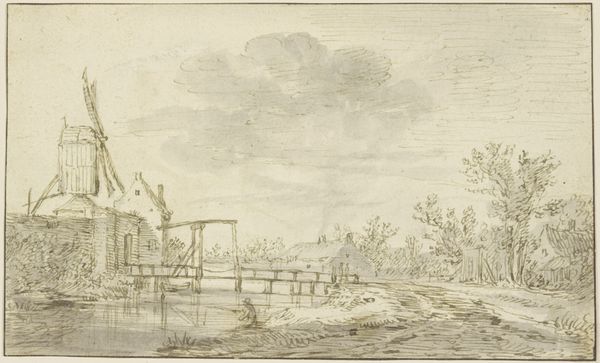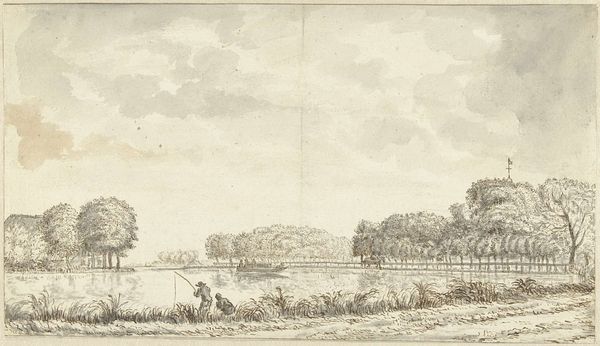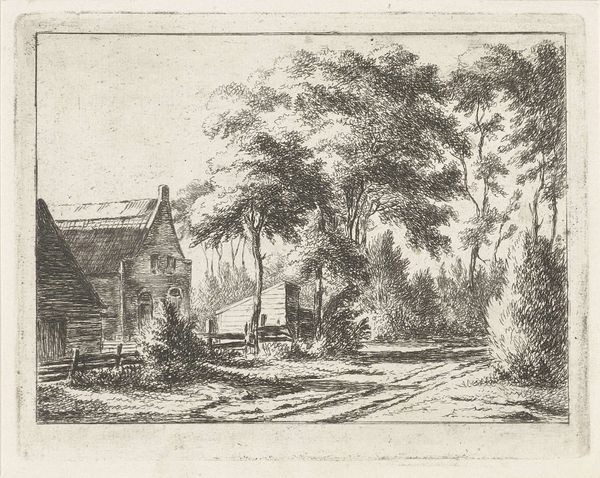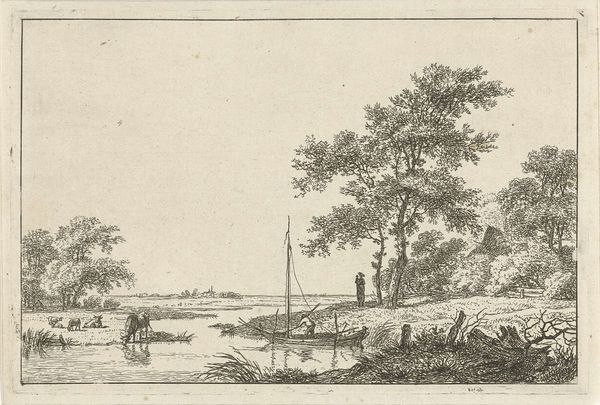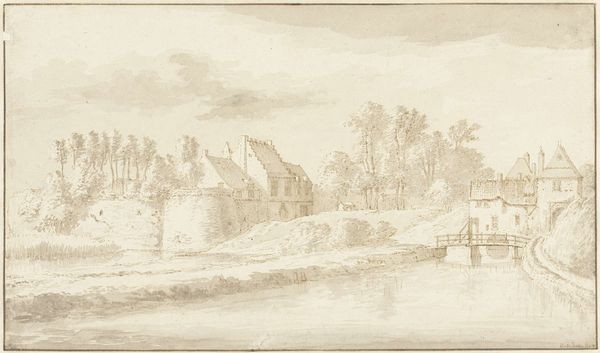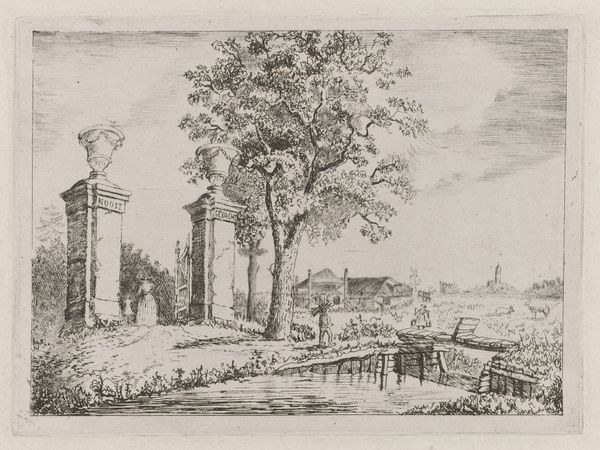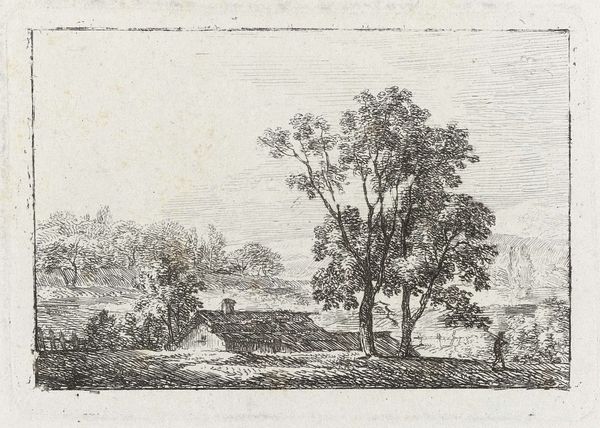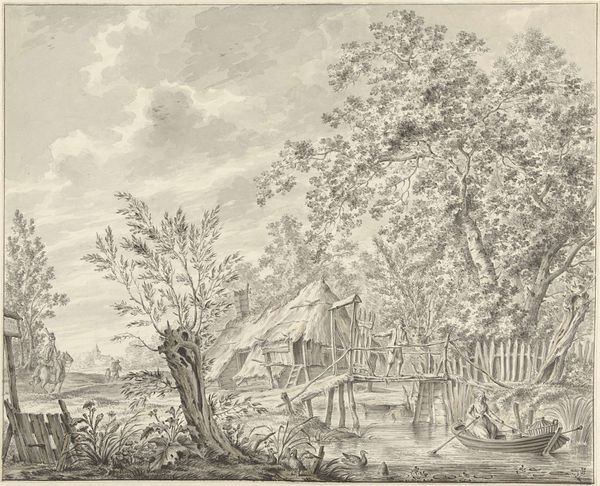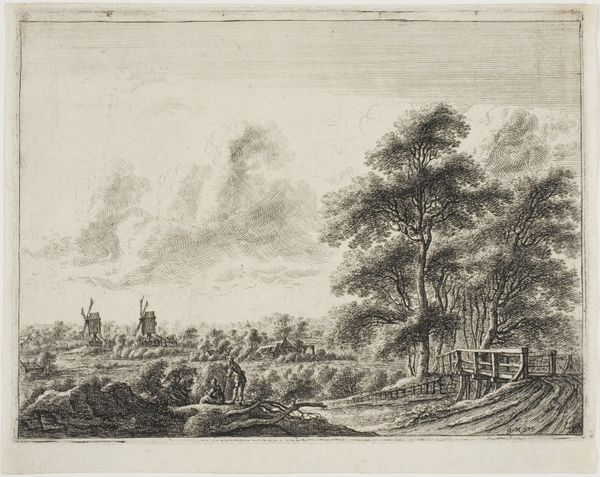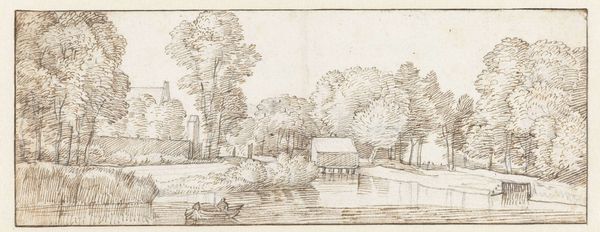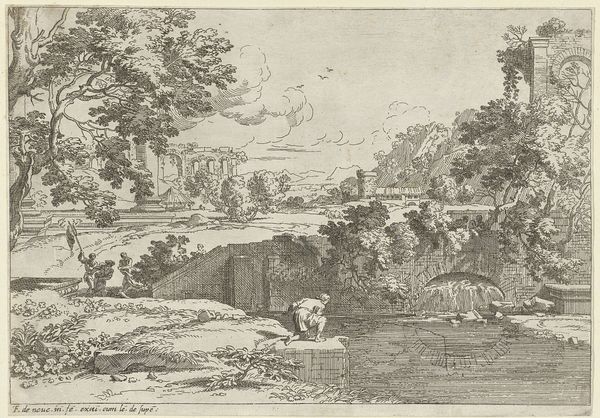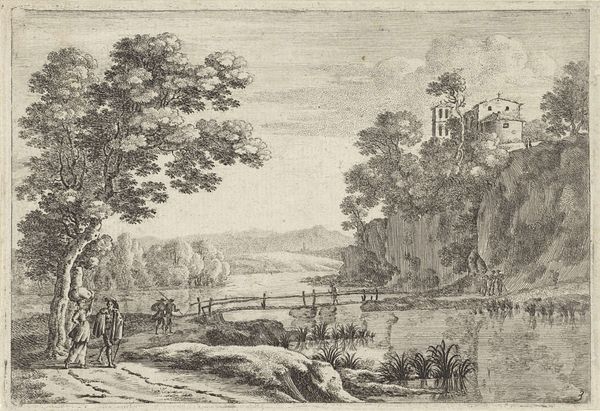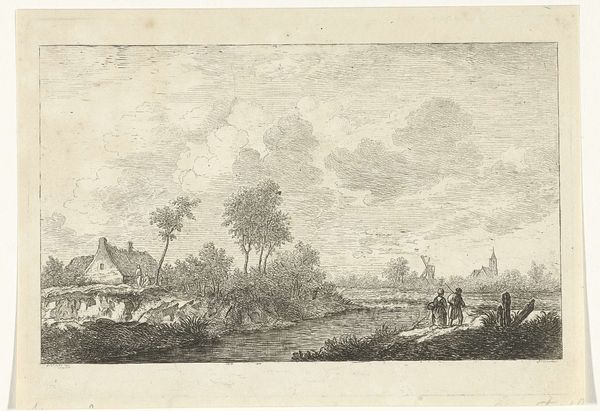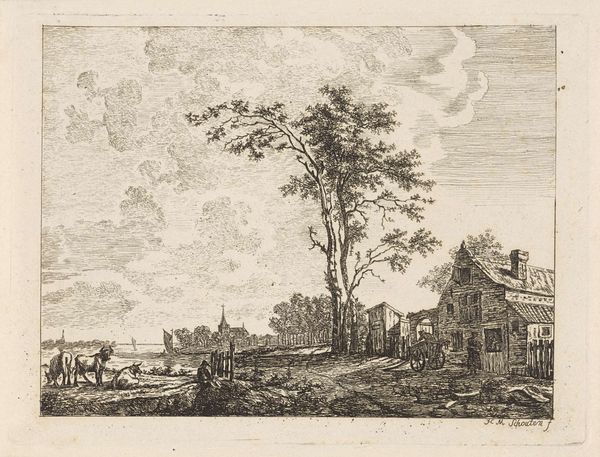
drawing, ink
#
drawing
#
pen sketch
#
pencil sketch
#
landscape
#
ink
#
realism
Dimensions: height 88 mm, width 134 mm
Copyright: Rijks Museum: Open Domain
Curator: Hendrik Marcus Schouten, a Dutch artist active in the late 18th and early 19th centuries, rendered this pastoral scene sometime between 1806 and 1835. The piece, titled "Landschap met visser", is a drawing in ink, showcasing a serene landscape. Editor: The composition evokes a certain calmness, wouldn't you agree? The meticulous details, achieved with such delicate lines, convey a feeling of understated beauty. The figure fishing seems like such a timeless presence, integrated effortlessly with the serene countryside setting. Curator: Precisely. Note how Schouten masterfully employed various line densities to depict depth. The darker, more defined lines bring the foreground elements—the fence, the fisherman—forward, whereas the background details fade into subtle, hazy sketches, producing a layered effect. Also, observe how this method captures a realistic reflection of the sunlight falling on the pond's still water. Editor: Absolutely. The scene is constructed on a contrast of dark and light which certainly offers dynamism. What can we interpret through the cultural lens? Given the period, might we suggest that the subject—an ordinary fisherman—aligns with rising social views of nature's sublime accessibility? It almost romanticizes humble rural lives. Curator: That's a fascinating perspective! Viewing it through that lens, we see how the drawing goes beyond just realistic depictions to communicate values which were gradually changing and becoming more and more democratized. Editor: Thinking purely structurally, though, doesn't the presence of this gate in the lower right offer a transition between two realities, or spaces, represented by nature in its wildest state versus civilized territory? Curator: It’s an evocative detail, indeed. I had interpreted the structure almost architecturally but hadn't really analyzed what that implied! We also need to discuss the materiality of drawing; note how such humble resources – ink on paper – capture expansive scenes or intimate interactions in everyday life, or offer insight to an aesthetic appreciation in the nineteenth-century. Editor: Thank you, yes. Overall, this small drawing becomes a much wider narrative tapestry – blending material ingenuity with cultural moment and social reflections from centuries beyond its time! Curator: Yes! This piece makes us re-evaluate landscape drawing, which extends beyond accurate presentation to offer an intricate insight into social concepts through time.
Comments
No comments
Be the first to comment and join the conversation on the ultimate creative platform.
